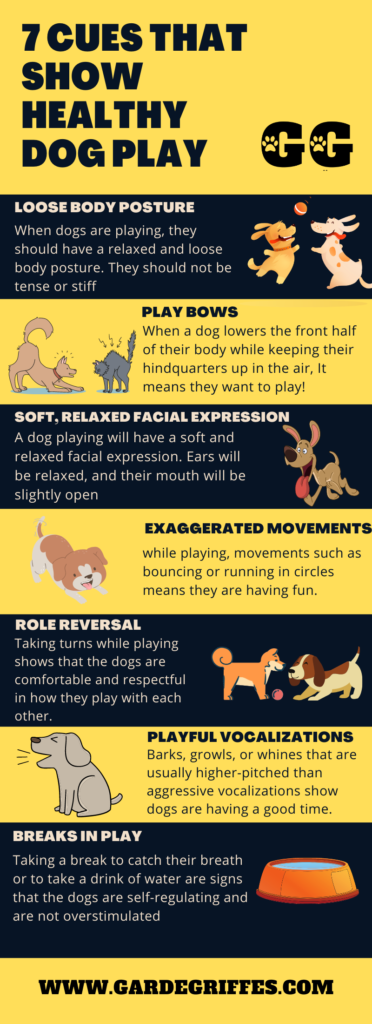Healthy Dog Play
Dogs are social creatures that enjoy interacting and playing with each other. As a dog owner or caretaker, it’s essential to recognize the cues that show healthy dog play. Understanding these cues can help you ensure the safety and comfort of all dogs involved in play.
A healthy dog play involves several behaviors that show the dogs are enjoying themselves and not experiencing fear or aggression. One of the most significant cues is a loose body posture. When dogs are playing, they should have relaxed muscles and be free from stiffness or tension.
Another important cue is a play bow. A dog that lowers its front half while keeping its hindquarters up in the air is signaling that they want to play and are not being aggressive. Additionally, dogs in healthy play will have soft, relaxed facial expressions, with their ears and mouth slightly open.
Dogs in healthy play will make exaggerated movements such as bouncing or running in circles, and they will often take turns being the chaser and the one being chased. They may also make playful vocalizations such as barks, growls, or whines that are usually higher-pitched than aggressive vocalizations.
It’s essential to monitor dog play and ensure that the dogs take breaks in play to catch their breath or drink water. These breaks are a sign that the dogs are self-regulating and not overstimulated.
It’s important to remember that dogs may have different play styles and preferences. While the cues listed above are generally indicators of healthy play, it’s crucial to observe and monitor the dogs to ensure that they are comfortable with each other and not displaying signs of aggression or fear.
In conclusion, understanding the cues that show healthy dog play is vital for any dog owner or caretaker. By recognizing these cues and monitoring the dogs’ behavior, you can ensure that they are enjoying themselves and that their play is safe and comfortable for all involved.


